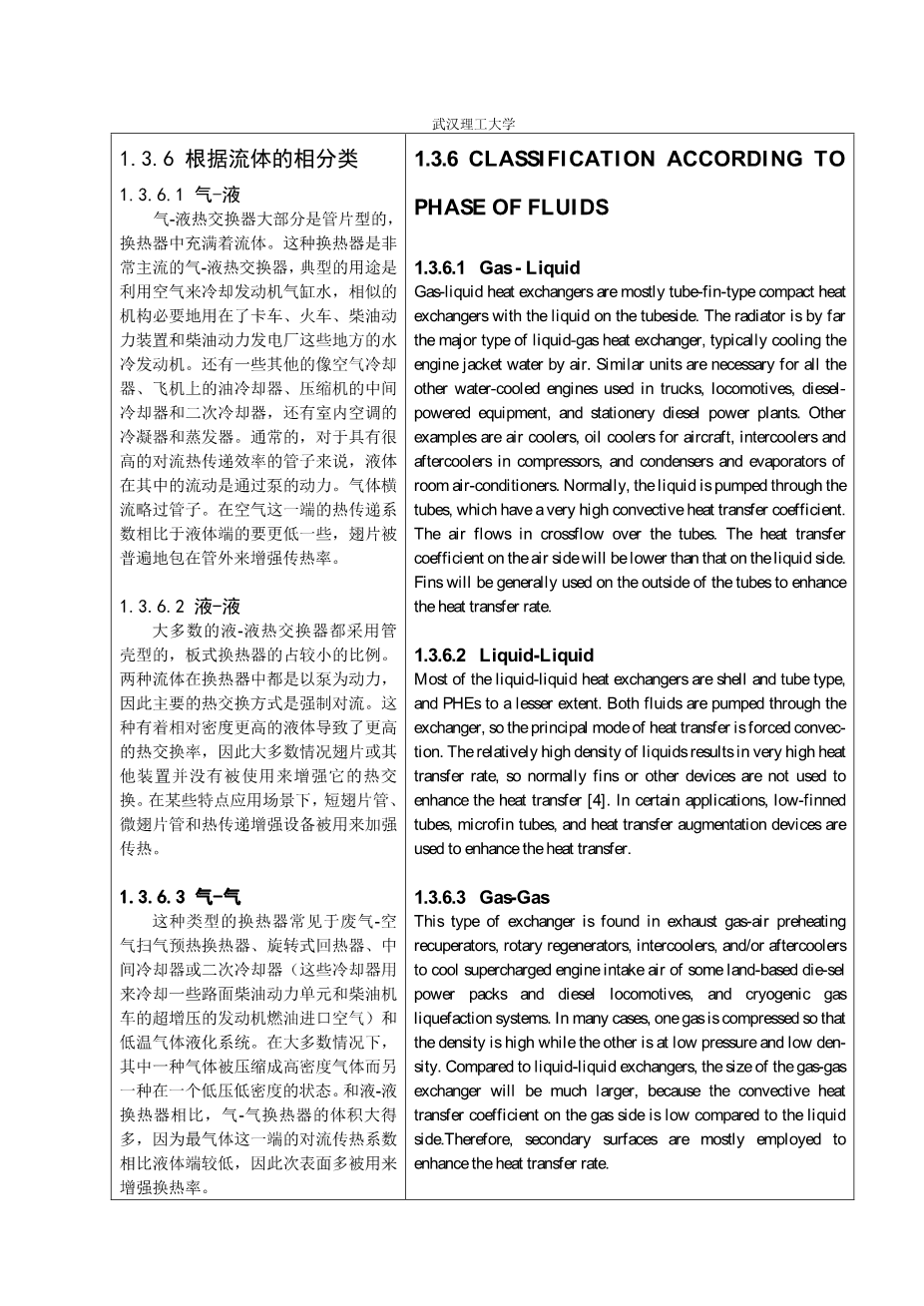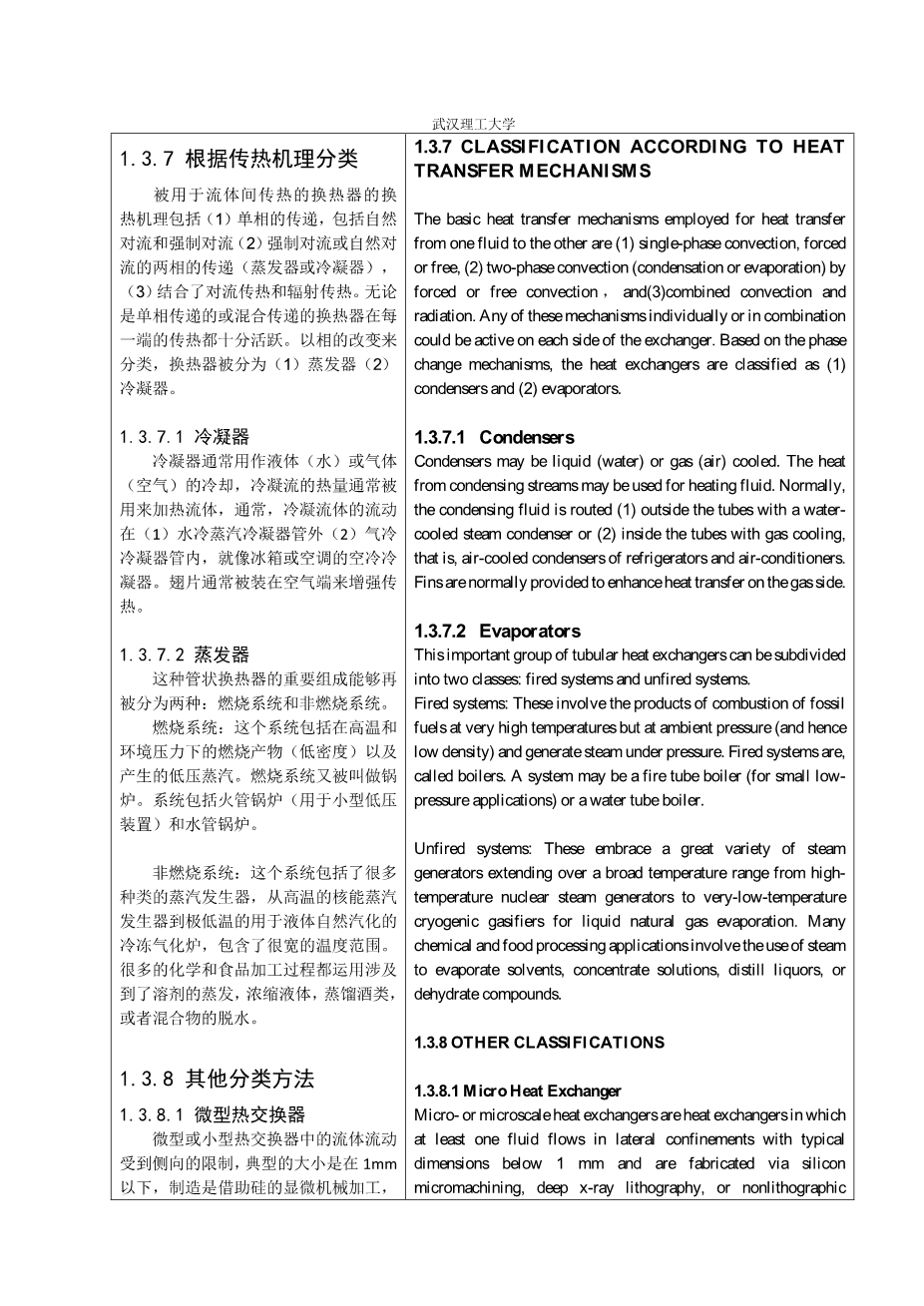1.3.6 CLASSIFICATION ACCORDING TO PHASE OF FLUIDS
1.3.6.1 Gas - Liquid
Gas-liquid heat exchangers are mostly tube-fin-type compact heat exchangers with the liquid on the tubeside. The radiator is by far the major type of liquid-gas heat exchanger, typically cooling the engine jacket water by air. Similar units are necessary for all the other water-cooled engines used in trucks, locomotives, diesel-powered equipment, and stationery diesel power plants. Other examples are air coolers, oil coolers for aircraft, intercoolers and aftercoolers in compressors, and condensers and evaporators of room air-conditioners. Normally, the liquid is pumped through the tubes, which have a very high convective heat transfer coefficient. The air flows in crossflow over the tubes. The heat transfer coefficient on the air side will be lower than that on the liquid side. Fins will be generally used on the outside of the tubes to enhance the heat transfer rate.
1.3.6.2 Liquid-Liquid
Most of the liquid-liquid heat exchangers are shell and tube type, and PHEs to a lesser extent. Both fluids are pumped through the exchanger, so the principal mode of heat transfer is forced convec-tion. The relatively high density of liquids results in very high heat transfer rate, so normally fins or other devices are not used to enhance the heat transfer [4]. In certain applications, low-finned tubes, microfin tubes, and heat transfer augmentation devices are used to enhance the heat transfer.
1.3.6.3 Gas-Gas
This type of exchanger is found in exhaust gas-air preheating recuperators, rotary regenerators, intercoolers, and/or aftercoolers to cool supercharged engine intake air of some land-based die-sel power packs and diesel locomotives, and cryogenic gas liquefaction systems. In many cases, one gas is compressed so that the density is high while the other is at low pressure and low den-sity. Compared to liquid-liquid exchangers, the size of the gas-gas exchanger will be much larger, because the convective heat transfer coefficient on the gas side is low compared to the liquid side.
Therefore, secondary surfaces are mostly employed to enhance the heat transfer rate.
1.3.7 CLASSIFICATION ACCORDING TO HEAT TRANSFER MECHANISMS
The basic heat transfer mechanisms employed for heat transfer from one fluid to the other are (1) single-phase convection, forced or free, (2) two-phase convection (condensation or evaporation) by forced or free convection,and(3)combined convection and radiation. Any of these mechanisms individually or in combination could be active on each side of the exchanger. Based on the phase change mechanisms, the heat exchangers are classified as (1) condensers and (2) evaporators.
1.3.7.1 Condensers
Condensers may be liquid (water) or gas (air) cooled. The heat from condensing streams may be used for heating fluid. Normally, the condensing fluid is routed (1) outside the tubes with a water-cooled steam condenser or (2) inside the tubes with gas cooling, that is, air-cooled condensers of refrigerators and air-conditioners. Fins are normally provided to enhance heat transfer on the gas side.
1.3.7.2 Evaporators
This important group of tubular heat exchangers can be subdivided into two classes: fired systems and unfired systems.
Fired systems: These involve the products of combustion of fossil fuels at very high temperatures but at ambient pressure (and hence low density) and generate steam under pressure. Fired systems are, called boilers. A system may be a fire tube boiler (for small low-pressure applications) or a water tube boiler.
Unfired systems: These embrace a great variety of steam generators extending over a broad temperature range from high-temperature nuclear steam generators to very-low-temperature cryogenic gasifiers for liquid natural gas evaporation. Many chemical and food processing applications involve the use of steam to evaporate solvents, concentrate solutions, distill liquors, or dehydrate compounds.
1.3.8 OTHER CLASSIFICATIONS
1.3.8.1 Micro Heat Exchanger
Micro- or microscale heat exchangers are heat exchangers in which at least one fluid flows in lateral confinements with typical dimensions below 1 mm and are fabricated via silicon micromachining, deep x-ray lithography, or nonlithographic micromachining [18]. The plates are stacked forming
“sandwich” structures,as in the “large” plate exchangers. All flow configurations (cocurrent,countercurrent, and crossflow) are possible.
Typically, the fluid flows through a cavity called a microchannel. Microheat exchangers have been demonstrated with high convective heat transfer coefficient. Investigation of microscale thermal devices is motivated by the single-phase internal flow correlation for convective heat transfer:
where
h is the heat transfer coefficient
Nu is the Nusselt number
k is the thermal conductivity of the fluid
Dh is the hydraulic diameter of the channel or duct
In internal laminar flows, the Nusselt number becomes a constant. As the Reynolds number is proportional to hydraulic diameter, fluid flow in channels of small hydraulic diameter will predomi-
nantly be laminar. This correlation therefore indicates that the heat transfer coefficient increases as the channel diameter decreases. Heat transfer enhancement in laminar flow is further discussed in Chapter 8 Section 8.3.3.
1.3.8.1.1 Advantages over Macroscale Heat Exchangers
bull; Substantially better performance
bull; Enhanced heat transfer coefficient with a large number of smaller channels
bull; Smaller size that allows for an increase in mobility and uses
bull; Light weight reduces the structural and support requirements
bull; Lower cost due to less material being used in fabrication
1.3.8.1.2 Applications of Microsca
剩余内容已隐藏,支付完成后下载完整资料
英语原文共 20 页,剩余内容已隐藏,支付完成后下载完整资料
资料编号:[146153],资料为PDF文档或Word文档,PDF文档可免费转换为Word
以上是毕业论文外文翻译,课题毕业论文、任务书、文献综述、开题报告、程序设计、图纸设计等资料可联系客服协助查找。




